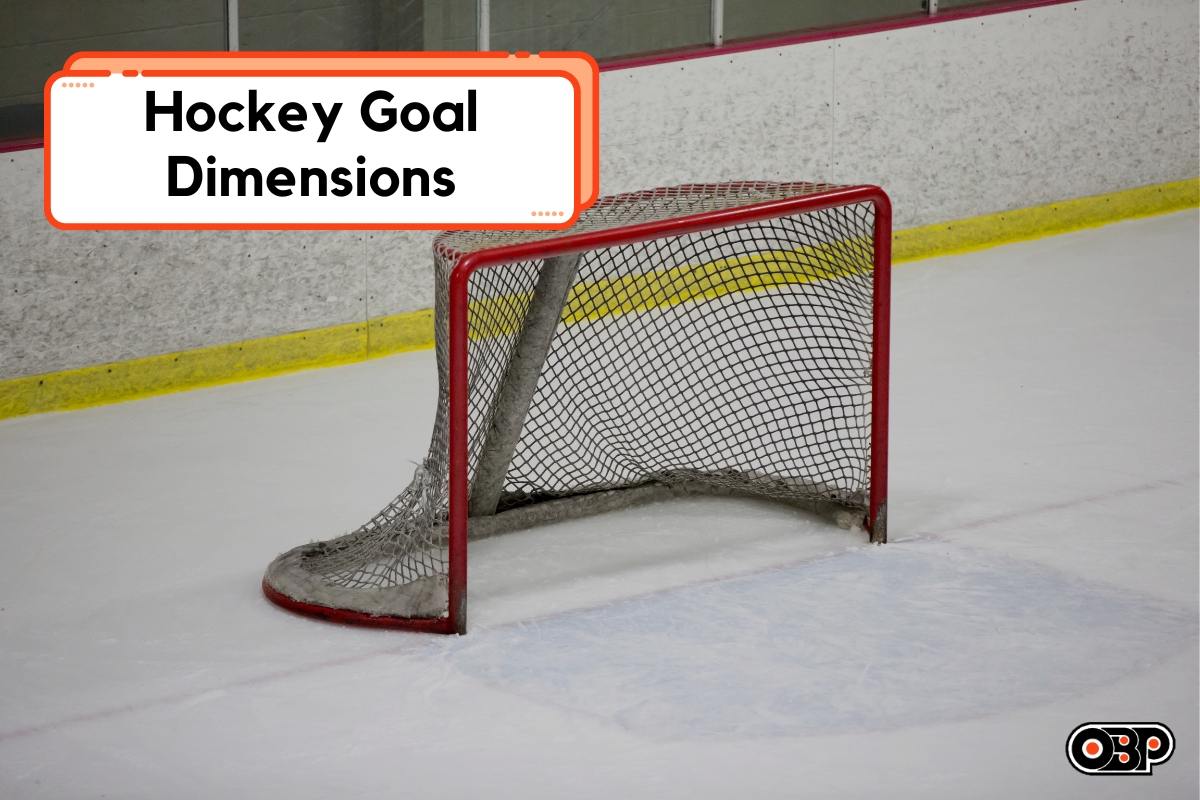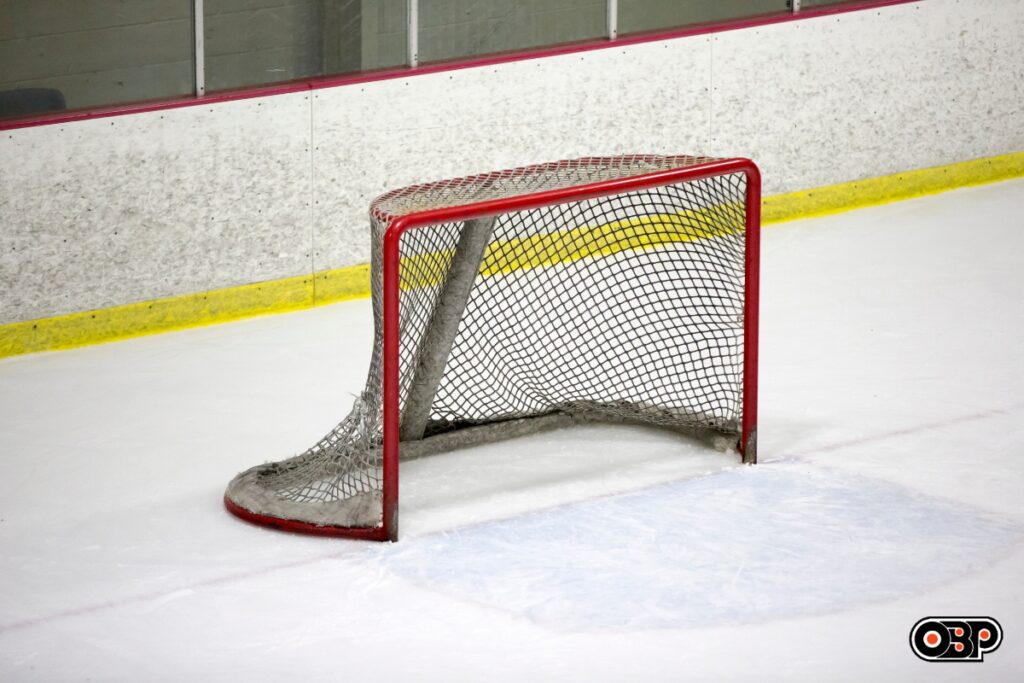
Table of Contents
ToggleWant to understand the specifics of hockey goal dimensions? It’s a common question for many, given that an official NHL regulation hockey goal net measures 72 inches wide by 48 inches tall and varies in depth.
In this post, I break down everything you need to know about these measurements, from their professional standards to why they are so important in the game of hockey.
Regulation of hockey goal dimensions is pivotal to maintaining fairness and consistency across games. If sizes varied, it could allow one team an unfair advantage or create confusion among players.
Think about a goalie trying to defend different sized goals every game; that would throw off their training routines, making the game less enjoyable and challenging.
The National Hockey League (NHL) sets the standard for professional hockey goal dimensions, with its overall width standing at 88 inches. The standardized size allows both teams on the ice to know what they’re shooting at or blocking from entering the net.
It’s crucial in sport where thin margins often determine winners and losers.
These regulations extend beyond professional leagues: youth hockey divisions also adhere to specific sizes for their goals, though these are somewhat smaller proportionate to participants’ ages and skill levels.
Such uniformity keeps competition fair while supporting player development by providing consistent targets for practice and gameplay.
Field hockey presents another interesting case; goal measurements exclude post widths or diameters since scoring involves getting your shot inside these posts anyway! This rule ensures no bonus points awarded due only wider posts – a perfect example of ensuring all aspects of play remain an equal opportunity endeavor!
Simply put: regulating hockey goal post dimensions helps maintain balance within the sport – leveling playing fields while protecting integrity gameplay itself!

The standard dimensions of a professional hockey goal are 72 inches wide, 48 inches tall, and 40 inches deep.
Measuring 72 inches or 180 cm in width, the hockey goal is designed to challenge players’ accuracy while not being extremely difficult to score. This standard width gives goalkeepers ample area to guard and still leaves sufficient space for players to aim at and shoot.
The display of skill becomes crucial with this regulated measurement.
The National Hockey League (NHL) strictly adheres to these regulations, ensuring a consistent playing field wherever the game takes place. Even at most other levels of hockey, the opening span across remains unvaried at 72 inches.
Goal posts chime in these dimensions too – an inside dimension of 2 inches and an outside dimension of 2-3/8 inches uphold uniformity in design specs across arenas.
Reaching a height of 48 inches, or approximately 120 centimeters, is the standard for professional hockey goals. This measurement applies to both NHL games and international matches.
With this regulation height, goalkeepers must master their skills to defend an opening that stands four feet tall. The taller frame makes scoring more challenging yet rewarding for players as it requires precision and power in each shot on goal.
With these dimensions defining an integral component of the game, achieving the right balance between offense and defense becomes paramount in competitive ice hockey matches.
The depth of a professional hockey goal is 40 inches or 100 cm. This means that from the front to the back, the goal extends for approximately three feet and four inches. The footprint of the goal on the ice measures 40 inches (100 cm) deep.
These dimensions have remained consistent over the years as the standard for professional hockey goals.
Read about: Free Agents in NHL
The history of hockey goal dimensions traces back to the evolution of goal net designs and the introduction of standard dimensions.
Intrigued? Keep reading to learn more about how these regulations have shaped the game.
Hockey goal net designs have evolved significantly since their introduction in the late 1800s. Initially, the Nova Scotia Box Net, developed by the Halifax hockey teams in 1899, consisted of a wooden frame with a mesh pocket attached to it.
Over time, advancements in materials and technology led to the development of more durable and efficient net designs.
In recent years, most hockey nets are made with metal frames and nylon mesh pockets. This combination provides better durability and stability during gameplay. Additionally, many nets now feature extra reinforcements to prevent them from tipping over or collapsing under heavy impact.
These improvements ensure that the goals remain intact throughout intense matches.
Standard dimensions for professional hockey goals were introduced to ensure consistency and fairness in the game. The current standard size for a hockey goal in the NHL is 72 inches wide, 48 inches tall, and has a depth of 40 inches.
These dimensions have been in place since at least the 1998-99 season, providing players with a set target to aim for during games. By establishing these standard dimensions, it allows for fair play and ensures that all teams are playing on an equal playing field when it comes to scoring goals.

– Youth hockey goal dimensions are smaller and typically range from 72 inches (180 cm) in width, 36 inches (90 cm) in height, and 30 inches (75 cm) in depth.
– Field hockey goal dimensions differ from ice hockey goals, with a width of 12 feet (3.7 meters), a height of 7 feet (2.1 meters), and no depth.
The dimensions of a youth hockey goal are 6 feet tall by 4 feet wide. The opening of the goal measures 72 inches wide by 48 inches tall. These smaller dimensions are specifically designed for younger players to accommodate their size and skill level.
As children grow older and progress through different age groups, the regulation goal sizes will also vary accordingly.
The dimensions of a field hockey goal are regulated to ensure fairness and consistency in the game. A standard field hockey goal is 6 feet tall by 4 feet wide, with an opening that measures 72 inches (180 cm) wide by 48 inches (120 cm) tall.
The goals have a rectangular shape and should be 2 inches (51 mm) wide and 2–3 inches (51–76 mm) deep. Surrounding the goal are backboards that have a height of around 19.69 inches (50 cm).
Field hockey goals typically weigh about 200 pounds (90 kg), providing stability during gameplay.
In conclusion, the dimensions of a hockey goal play a crucial role in shaping the game. The regulation size ensures fairness and consistency across all levels of play.
So next time you’re watching a game, take a moment to appreciate the precision and skill required to score within those 72 by 48 inches!
According to the International Ice Hockey Federation (IIHF), the standard dimensions for a hockey goal are 6 feet wide and 4 feet tall.
Yes, there are variations in size for hockey goals depending on the age group and level of play. For example, youth leagues may use smaller goals, such as 4 feet wide and 3 feet tall, while professional leagues adhere to the standard dimensions.
Having specific dimensions ensures consistency across games and allows players to develop their skills based on standardized equipment. It also helps goaltenders practice positioning and saves in a consistent manner.
For recreational play, you have some flexibility with adjusting the size of the goal as long as it remains proportional and maintains a rectangular shape. However, it’s important to consider safety factors and ensure that any modifications do not compromise gameplay or player experiences.
Share:
OrangeandBlackPack.com is a participant in the Amazon Services LLC Associates Program, an affiliate advertising program designed to provide a means for sites to earn advertising fees by advertising and linking to awin, amazon.com and affiliated websites. Amazon, the Amazon logo, AmazonSupply, and the AmazonSupply logo are trademarks of Amazon.com, Inc. or its affiliates.
Address: 2430 N 20th St, Philadelphia, PA 19132, USA
© 2024 Orange and Black Pack